Pick the right application and a miniature hydraulic system will be perfect for you or your customer. It can provide a dedicated hydraulic system for your specific task rather than sharing a complicated system, have a very small space envelope and can be incredibly cost effective.
After 40 years, we have seen how our customers use our miniature hydraulic hand pumps as the core of their systems.
We are calling a “hydraulic system” something that will pressurise fluid to do work such as actuation, test, charge or fill. There are a lot of applications. Our key product is hand pumps. We don’t get involved in electric gear or piston pumps.
Let’s look at miniature hydraulic systems. So, can you achieve a cost and performance advantage by using one?
What is a miniature hydraulic system?
We would say that a miniature hydraulic system is a very compact hydraulic system using very small micro hydraulic components but capable of doing a serious rugged job. Forget flimsy products or kit that doesn’t feel quite up to the job. It will do everything that a bigger hydraulic system will do such as actuation, filling, charging or testing but you will inevitably not be shifting large amounts of fluid or have high flows. You might well design to run at high pressures such as 630 bar or 700 bar to get the best out of your design. Or your system might be a great solution even down at 40 bar. Every application is different.
What is a miniature hydraulic system used for?
In the real world, you would find them in brakes and winches where you only need to move an actuator by a small distance. That has been a strong area for us over many years. We will look at what we can learn from bicycle, motorcycle and auto miniature hydraulics as a good starting point in our own application later in this paper. Vehicle seating has been another big application for us where we have also supplied the miniature cylinder and hose for a seat lift mechanism. Our other very big application has been hydraulic actuation for small actuators where the cylinder volumes are very small. On one marine application we supplied 47 miniature MC series pumps, one for each actuator. Work holding, jigging a production equipment is another very strong area for miniature hydraulics. You may want to use one or multiple small cylinders to clamp a workpiece solidly whilst it is being welded or machined. A massive system made up from mainstream hand pumps, hoses and cylinders just seems the wrong solution and probably at too high a price. Add in our Micropac options for corrosion resistance and service on difficult fluids and you expand the application into marine, process, automotive and aerospace. Why be forced to use a wheel around cart when all the application needs is a small carry around test unit?
What are the benefits of a miniature hydraulic system?
We would say the benefits are a very small space envelope, simplicity, inherent reliability of manual hydraulics and invariably cost. We would be keen on an integrated pump/reservoir pump that provides all your functionality as compactly as possible thus eliminating fittings and pipework for extra parts. When a miniature hydraulic system really works for an application, the results are dramatic.
Have a look at automotive, motorcycle and bicycle miniature hydraulic systems and you can see the power of the concept. Who hasn’t seen an automotive hydraulic convertible in operation and seen the power of miniature hydraulics to solve an awkward engineering problem?
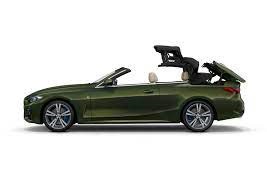
A masterpiece of miniature hydraulics. We like this BMW 4 series hood.
What parts are in a miniature hydraulic system and where do you buy them?
Why use miniature hydraulics when electric actuation is used everywhere?
Electric actuation is massive. If you have electronic control, then integrating it with electric actuators is that much easier than a hydraulic system. Manufacturing actuation components in the Far East has driven down the costs massively and maybe designers will visit electric systems as their first port of call. But miniature hydraulics still has a unique place.
Basic hydraulics in miniature systems. What’s the difference between hydraulic bicycle brakes and a Sarum Hydraulics Micropac miniature hydraulic system?
We had to include this question, as it is so commonly asked. It is a good starting point as we are looking at the simplest single-shot hydraulic pumps and asking whether that works for us, or do we have to move to a reciprocating hand pump where we move a handle many times? It also helps designers think about what miniature hydraulics can achieve in the real world. We think that cycle brakes are a masterpiece.
Should I use a “single shot” or a reciprocating hand pump on my miniature hydraulic system?
If the figures work, a designer would logically go for a “single shot” system like a master cylinder every time as it is so simple. It is always worth just checking whether your application could run with a single shot miniature hydraulic system.
Can I actually use bicycle hydraulic brake system parts in my miniature hydraulic system?
Pick exactly the right application and the answer is yes for the pump. But you are very restricted, as the displacements are minute. We have looked at another off the shelf solution using a motorcycle lever pump in our white paper. You are still quite limited, but it is worth a look. Can you utilise the bicycle hydraulic calliper? We think this looks like a very restricted application. Needless to say, a disc brake is ideal for the sort of scale of component, as the stroke is so small.
In our imminent white paper, we have also looked at whether you can use bicycle, motorcycle or automotive hoses in your miniature hydraulic system. It is an interesting subject.
What are the limits on pressure, displacement and capacity on a miniature hydraulic system?
We would say that your initial quick calculations are everything. How much fluid are you shifting and at what pressure? If it is an actuator, you will know the swept volume and pressure. If it is a test set up or for filling, you will again know the volume. Single or double acting actuators? If you are looking at our true miniature MC pump unit, that generates 0.6cc per double stroke to 400 bar (170 bar if the four-way directional valve is fitted.) The integral reservoir is 20cc and an extended reservoir of 175cc can be fitted. That does limit the displacement of an actuator. In reality, you probably won’t want to be pumping more that 50 or 100 strokes. Our slightly larger (but still small) MPM models feature integral reservoirs. The larger MPM-2 model is two speed, offering 1.2cc per stroke on the low pressure stage and 0.6cc on the high pressure stage. That is useful in cutting the number of handle strokes for example where you are extending a ram at low pressure before it contacts the workpiece. If you need larger still, our cartridge pumps provide the basis of a system as would our workhorse MW pump, but these aren’t the miniature solution we are discussing here. Definitely look at MC or MPM pumps. 400 bar is the pressure on the MC reduced to 170 bar if we fit our sub miniature four way directional control valve. The MPM will run to 700 bar. Your next constraint will be hoses and pipework. You wouldn’t be using a mainstream -4 bore hydraulic hose on a miniature system. We are fans of Polyflex microbore hoses and also the range of microbore hoses and Minimess couplings from Hydrotechnik. Stauff also offers a good range. 630 bar is a common standard on these.
If the basic figures aren’t there, just move on to a Micropac MW series pump on a fixed or portable reservoir. You can still provide a compact and cost-effective solution. Just not the truly miniature MC and MPM Micropac solution.
Can I use a knob actuated Micropac pump in my miniature hydraulic system?
Yes, you can to a point. Our TM cartridge pump offers 1.2cc to 50 bar and is fitted with inlet and outlet check valves. It is a C10-2 cartridge but needs mounting in one of our small manifold blocks with P and T connections. You will need to provide a reservoir. The pump has no integral release or relief valves. Yes, you can design a neat system using additional components but fittings, pipework and even a very small reservoir always add bulk. The MC or MPM pumps are integrating the reservoir, release and relief valves into one. We were always very keen on the knob actuated pumps but suspect that the number of applications is small because the pressure you can generate is so low. Add a handle with its own mechanical advantage and the pressure is drastically higher with very little additional space required or cost.
Can I design to 700 bar on a miniature hydraulic system?
Our MPM will run to 700 bar, but you will find some other miniature components are limited to 630 bar. That is a DIN standard that is well entrenched. For example, the Parker/Polyflex 2020N microbore hose is 630 bar. The same is true for our favourite Minimess fittings, at least with smaller threads. There is a higher pressure Minimess as well with larger threads. If you can run at higher pressure, that provides the opportunity to get the space envelope and mass of parts down. Much as we run a lot of our other kit on 700 bar, we would compromise and run at 630 bar if that opened up a bigger range of components. As always, never run at higher than the stated working pressure.
Can I run my miniature hydraulic system on fluids other than mineral oil?
The little MC series pump will run on mineral oil, synthetics or even glycols such as PAG. It can be operated on brake fluid with the right seals. Talk to the factory.
The MPM has a sealed hydraulic system with a nitrile bladder. That does limit operation to mineral oils and compatible fluids.
Keep in mind that your braking systems, whether bicycle, motorcycle or automotive will be running on brake fluid. Check out seal compatibility. Care is needed.
If you require water service or offshore control fluids such as Oceanics, we can offer a solution based on the MW-3 series or MT-6 cartridge pump. These are compact but not miniature. The inlet and outlet check valves need to be soft seat and poppet types. We don’t fit these to the MC or MPM. Talk to us about water glycols and offshore control fluids.
Can I specify an electric pump for my miniature hydraulic system?
The answer is that it is possible for very low pressure but tricky on higher pressures if you need a minute space envelope.
The smallest mainstream electric power packs are quite large. Even small reversible power packs used on marine autopilots seem relatively large if we are searching for truly miniature. For example, the Hy Pro reversing DC power pack using a gear pump is rated to 50 bar and is 200mm long by 90mm high. That’s small but not hitting the spot for our miniature hydraulics. Takako Industries manufacture a truly minute hydraulic piston pump at only 30mm square. Or look at the little power pack used for your hydraulic car convertible roof. That’s running at say 160 bar but again, isn’t incredibly small. We would be very careful of building an automotive hydraulic pack into a product unless it is listed in a catalogue and somebody will sell you a few.
This Auto roof motor pump is small but only to a point.
Thank you www.roofmotors.co.uk for image.
On the web, you will find truly minute gear pumps/electric motors for hydraulics on models. They seem fairly low pressure like 20 bar and we aren’t sure they are industrial. Nevertheless, they are miniature.
You can source miniature piston pumps used on applications like downhole hydraulics from people like Bieri. At 50mm diameter, you still need to package these up with a motor, so there is some bulk there. Anyway, if you opt for a motor driven pump, you invariably need solenoid valves to release the pressure, moving you away from truly miniature. That makes the DC reversing power pack quite useful if you are operating double acting cylinders.
If you can live with low pressures like 20 bar, keep in mind solenoid powered pumps. We have seen an actuator power unit based on precisely this sort of pump. The people made the pump themselves and over many years it has been a great success. Of course, vending machine pumps are often based on a solenoid that moves the pump plunger backwards and forwards or a diaphragm.
How can I sort out reservoirs and check valves on a miniature hydraulic system?
Ensure that the reservoir is not an afterthought. A miniature hydraulic system can provide benefits in designing or sourcing reservoirs, as it is inherently so small.
If you have a miniature system with a small swept volume, you can live with a small reservoir. That opens up opportunities. We think that a small reservoir is a big win. Consider machining a cavity into a block like we do on the MC series. With clever design, that is almost something for nothing. You could use tube with end caps either welded on or sealed and held in place mechanically. Aluminium box section is a good call as well. The closures could be laser or water jet cut. If you are sorting out your own reservoir, make provision for an inlet strainer. Make the filler big enough to fill the tank. We like Elesa filler caps. They finish the job very nicely.
Can you buy an off the shelf plastic reservoir? You will find stock automotive plastic reservoirs, although we have always been nervous on continuity of supply. Also beware long lead times from the automotive parts suppliers. Also double check fluid compatibility.
One note of caution on any small displacement pumps. People commonly run with a flooded inlet, so the pump isn’t struggling to draw in fluid. A very small displacement will not draw much vacuum on the suction stroke. Similarly, if you have an inlet check valve, the cracking pressure has to be very low indeed. Proprietary check valves invariably have higher cracking pressures unsuitable for low pressure pumps. The vacuum that the pump plunger will draw on its suction stroke won’t even open the check valve, hence no fluid will be drawn in.
Can a miniature hydraulic system give me a competitive edge if I am competing against catalogue mainstream hydraulic parts?
From over 30 years’ experience of manufacturing the MC series miniature hydraulic pump, we would say yes. In many applications, miniature hydraulic won’t be the solution. Pick the right application and you have a winner. Our customers have provided exciting, compact and cost effective engineering solutions. The original user for the vehicle passenger seat hydraulics bought large numbers of MC pumps complete with a Polyflex hose and an innovative 5600N miniature pull cylinder of our design and manufacturer. Manual over ride hydraulic pumps have been another big user, with one pump per actuator for both marine and process use. We have sold the MC pump for use on brakes, winches, machinery, earthmoving equipment, calibration and refrigeration servicing using PAG fluid. Even motorsport people have bought them for specific jobs. Talk to us about your possible application.
We are the specialists. We are always pleased to discuss applications for our Micropac pumps, whether for miniature hydraulic kit or pumps from our wider range.

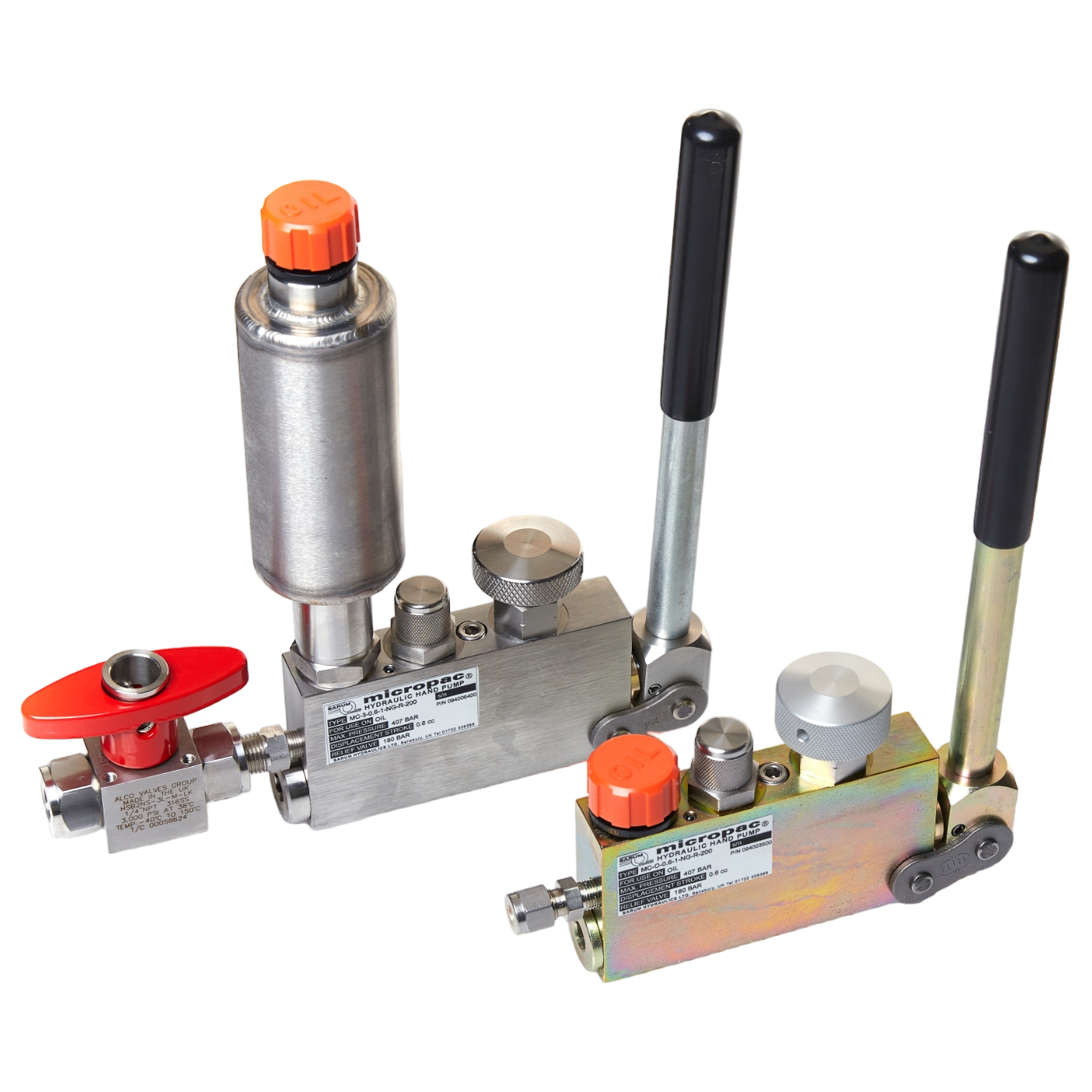
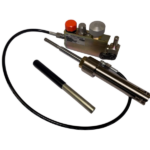
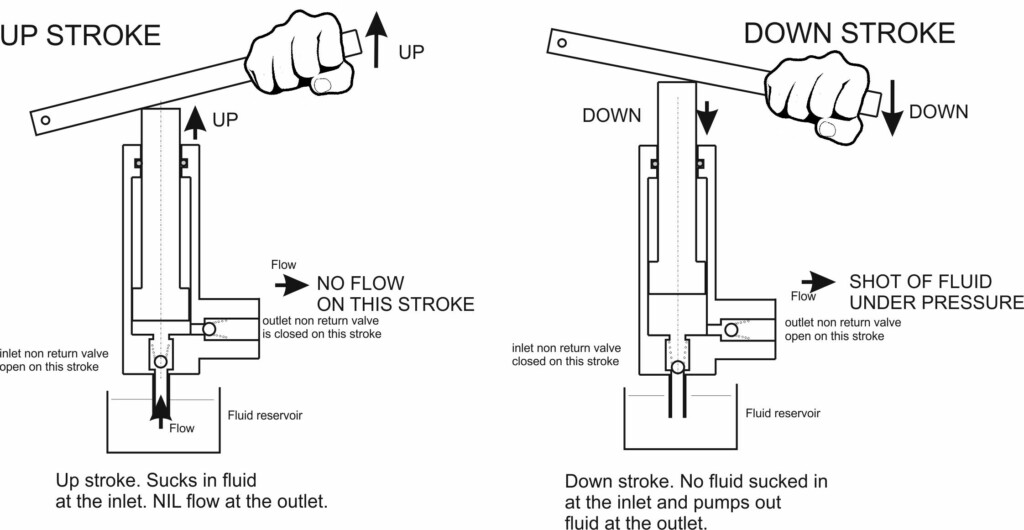
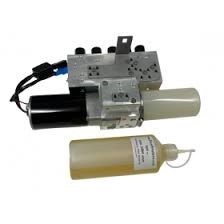
Leave A Comment